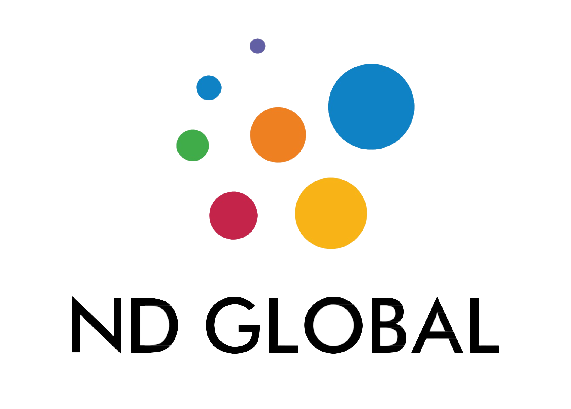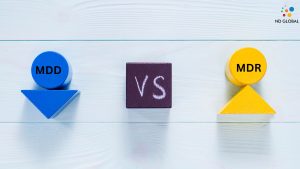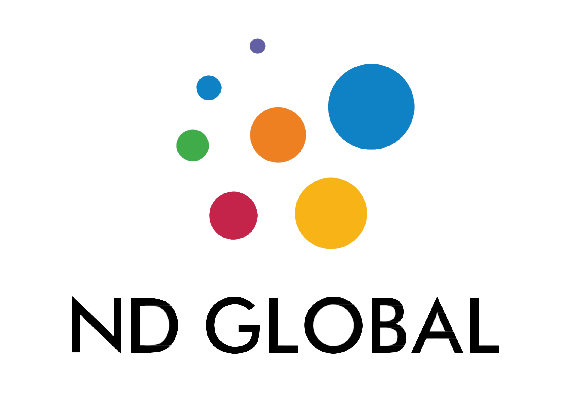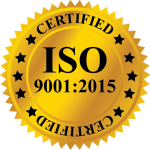Introduction – A Unique Device Identification (UDI) system is meant to offer a single, internationally harmonized system for identifying medical devices through distribution and usage, according to the International Medical Device Regulators Forum (IMDRF). To comply with UDI, devices must have labels that display a globally unique device identification that has been recorded in an ADC and, if relevant, the device’s Human Readable Interpretation (HRI). Accredited issuing agencies’ standards should be the foundation for this identification and data carrier.
Patients and healthcare providers will only need to consult several reliable sources to determine the essential features of a medical gadget. One authorized resource for more details is the Unique Device Identification Database (UDID). Only until UDI is integrated into all processes and systems by all parties involved—from the manufacturer to patients and healthcare providers—will the benefits of UDI be realized. As a result, everyone involved in creating and applying a UDI System must receive education.
What is the UDI?
A widely recognized device identification and coding standard generates the UDI, a string of alphanumeric or numeric characters. It makes it possible to identify a particular medical gadget on the market. The UDI-DI and UDI-PI make up the UDI. The unique identifier can be used anywhere globally and may contain lot or serial number information.
The following steps are involved in creating a UDI:
A device-specific UDI device identifier, or “UDI-DI,” that grants access to the data described in Annex VI Part B.
A UDI production identifier (or “UDI-PI”), as defined in Part C of Annex VI, designates the device production unit and, if relevant, the packaged devices.
What is the UDI-DI Basic?
Referenced in pertinent documentation such as certificates (including certificates of free sale), EU declarations of conformity, technical documentation, and summaries of safety and (Clinical) performance, the Basic UDI-DI serves as the primary access key for device-related data in the EUDAMED database.
Devices with the same intended use, risk class, and fundamental design and manufacturing features are meant to be recognized and connected.
It does not appear on any commercial item and is independent of the device’s packing or
Labelling.
Any Basic UDI-DI must have a unique identification for the devices (group) it covers.
UDI-DI.
The MDCG 2018-1 v3 guidance offers more details about Basic UDI-DI.
The manufacturer’s role
Before releasing a device onto the market, a manufacturer is required by the new regulations to assign a UDI to the item and all higher tiers of packaging. The device label and all upper tiers of the packaging must bear the UDI carrier. The maker must ensure that the data about the device in question—mentioned in Part B of Annex VI of the two regulations—is accurately submitted and uploaded to the UDI database before the device is put on the market. In the EU, the maker must also assign a Basic UDI-DI to their devices and a UDI.
The basic UDI-DI is the primary access key for the database and pertinent documentation (such as certifications, declarations of conformance, technical documentation, and summaries of safety and clinical performance). It will also be the access key for device-related data entered into any upcoming European medical device databases.
What function do the organizations that issue UDIs have? By whom are they designated?
The issuing entities run a system for assigning UDIs.
Following an application call at the end of 2018, the following organisations have been designated by the Commission:
a. GS1 AISBL
b. International Council for Commonality in Blood Banking Automation (ICCBBA)
c. Health Industry Business Communications Council (HIBCC)
d. Informationsstelle für Arzneispezialitäten (IFA) GmbH
Please see the applicable implementing statute designating the entities for further details:
The Commission selected issuing companies to run a system to assign Unique Device Identifiers (UDIs) in the medical device industry with Commission Implementing Decision (EU) 2019/939 of June 6, 2019.
Analysing the UDI system’s four phases:
1. Traceability
Products with a UDI number come with extensive manufacturing and sourcing data that helps ensure consistency and regulatory data compliance. Each of the two components of the UDI, the Device Identifier (DI) and Product Identifier (PI), is crucial. The DI functions as the device’s ongoing marketing and holds regulatory information. Conversely, the PI helps with quality assurance and tasks like tracking the device’s manufacturing date, serial number, and shelf life. Regarding what DI or PI should be on the device or its packaging, the International Medical Device Regulators Forum (IMDRF) offers varied recommendations for various devices.
Regarding what DI or PI should be on the device or its packaging, the International Medical Device Regulators Forum (IMDRF) offers varied recommendations for various devices. Companies should familiarise themselves with the needs for the item being introduced to the market to determine what numbers and where a device belongs on the solution. Considering how each nation interprets the technical forms used to report these numbers is also crucial. The GS1, HIBC, and ICCBA Standards differ in a few ways, including portions of the DI and PI statistics. To promote better harmonization, more rules regarding the execution of standards worldwide are required in this grey area.
2. International Business
Every stage of the product’s lifespan will alter the UDI number. Since the global supply chain, inventory, and distribution are connected to the UDI number at this level, any changes to the product lifecycle management (PLM) must be recorded.
For example, in design control, devices are registered in various nations using mandatory data in regulatory databases. Production and logistics must apply UDI criteria for worldwide compliance to decide how to package and create labels. UDI numbers track post-market operations such as adverse event reporting, recalls, and field safety remedial actions after launching a product.
Additionally, UDI traceability helps with the change management process by distributing changes throughout the product’s lifetime. It allows managing dynamic data across several databases and expediting the modifications above. Localising the UDI systems and criteria is the issue, though. This suggests that local UDI solutions must be developed and managed in the product-inventory management systems. Furthermore, some country purchasing agencies specify the necessity of using a particular UDI solution as a tender requirement, in addition to the mere requirement to have a UDI.
Due to the potential for increased complexity and expense, a corporation may need to determine if it is economically feasible to meet the requirements of this purchasing body by running numerous UDI systems or creating UDI solutions tailored to individual customers. A robust regulatory intelligence team will be necessary to keep up with the constantly changing needs for this kind of labeling and to integrate the UDI requirement into one of the numerous international labeling standards for medical devices.
3. Security
Improving patient safety, the efficiency of adverse event reporting, and related post-market activities are important objectives of a worldwide UDI. This concentrates on the manufacturing side with manufacturer and expiration dates while examining PI numbers. The DI number is associated with the market approval and post-launch data, such as clinical studies, registrations, certifications, and product vigilance. Since the UDI is the key to all the data, it enables improved traceability and uniformity. A worldwide system makes it possible to improve patient safety and identify trends more quickly. Globally, incidents are tracked and traced, which may improve patient safety and clinical decision-making.
4. Impact on Industry
Improving clinical procedures and supply chain efficiency would significantly affect a worldwide UDI program. An integrated database system guarantees uniform documentation and expedites medical claims and payments. It increases patient safety and treatment effectiveness while saving more money for life science companies. This effect on all business domains highlights the necessity of an international UDI program.
Examining these four advantages of a centralized UDI system reveals that the MedTech Industry needs a global, harmonized approach to promote a single standard for increased traceability and accountability. Because compliance submissions require the information utilized and maintained by the UDI system, UDI is directly involved in the product regulation process.
Above all, UDI is essential for integrating various disjointed tracking systems related to post-market surveillance, safety, and regulations. It is more than just system optimization; it is the first step toward turning compliance from a need to a competitive advantage. It offers transparency and bi-directional tracing by connecting the product, process, documentation, and real use. By including product trace in the supply chain and, consequently, inventory management at the healthcare provider, it streamlines worldwide operations. Better clinical results and significant cost reductions follow from this.
How should a UDI be shown on a device’s label or packaging?
On the label, the device itself, and on all higher levels of device packaging, the UDI Carrier Automated Identification for Data Capture (AIDC) and human-readable interpretation (HRI) representation of the UDI must be present.
The UDI carrier may be positioned on the next higher packaging level if there are notable space restrictions on the unit of use packaging.
Each higher level of packaging must have a distinct UDI.
Note that shipping containers are not subject to this regulation.
The UDI must be presented in an AIDC-enabled format and as human-readable information (HRI) or plain text.
Regarding further particular requirements of the UDI carrier, please refer to Annex VI Part C, Section 4, of the two Regulations.
The UDI carrier does not have to be visible on the packaging for single-use devices of classes I and IIa medical devices or class A and class B IVD medical devices that are packaged and labeled individually; instead, it must be visible on a higher level of packaging, such as a carton that holds multiple (individually packaged) devices.
Nonetheless, the UDI must be placed on the packaging (of the specific device) in situations where it is not anticipated that the healthcare professional will have access to the higher level of device packaging, such as in-home healthcare settings. The UDIPIs in AIDC are not required to be on the point-of-sale packaging for devices that are only meant to be used as retail point-of-sale.
It is optional to place the UDI carrier on the packaging if the device’s packaging makes the UDI carrier easily readable or, in the case of AIDC, scannable.
Advantages of UDI Technology
The following are a few advantages of the UDI system:
More precise reporting, examination, and analysis of adverse event reports quickly.
Locate, handle, and fix broken medical equipment.
Lowering medical errors by making it possible for stakeholders and healthcare providers to
Quickly identify a device and all of its details.
Improving device analysis by offering a unified and transparent method for recording medical.
Device use in registries, clinical information systems, claim data sources, and electronic health records. Furthermore, a post-market surveillance system can achieve premarket approval of already-marketed and newly developed devices.
No matter how often the equipment is repackaged or re-labelled, a standardized identity will enable stakeholders (such as manufacturers, distributors, and healthcare facilities) to manage recalls efficiently.
Laying the groundwork for an internationally safe supply chain that detects and deals with fake goods.
An international medical device identification scheme
Problems implementing the UDI system
Manufacturers who must submit data to each jurisdiction to fulfil their respective timeframes will find the process more complex as health authorities define and enforce different data qualities at different timelines for UDI regulations.
The Regulatory Affairs Professional Society (RAPS) states that disparate data properties and mandate dates may prevent healthcare systems and other downstream users from adopting standards-based UDI. In general, proper data quality and submission reporting across all health authorities are essential to the viability of the worldwide UDI system.
Conclusion – Implementing a Unique Device Identification (UDI) system represents a pivotal step toward enhancing the safety, traceability, and efficiency of medical devices across the globe. As we navigate the complexities of the healthcare landscape, embracing UDI addresses regulatory requirements and lays the foundation for innovation, quality improvement, and, ultimately, better patient outcomes. By harnessing the power of UDI, we can forge a path towards a safer, more efficient, and interconnected healthcare ecosystem.
Let us remain committed to driving forward the adoption and implementation of UDI, recognizing its transformative impact on the industry and its potential to revolutionize how we deliver and manage medical devices worldwide. Together, let us embrace the future of healthcare with confidence, resilience, and a shared commitment to excellence.
How ND Global can help – ND Global provides comprehensive support and expertise in navigating the complexities of implementing a Unique Device Identification (UDI) system. Here’s how ND Global can help:
1. Consultation Services: ND Global offers expert consultation services to guide organizations through the process of understanding UDI requirements, assessing their readiness, and developing a tailored implementation strategy.
2. Technical Solutions: ND Global offers technical solutions and tools to facilitate the generation, management, and submission of UDI data, streamlining the compliance process and minimizing operational burden.
3. Compliance Assistance: ND Global assists organizations in ensuring compliance with UDI regulations by conducting audits, performing gap analyses, and providing ongoing support to address any identified issues.
4. Integration Services: ND Global helps integrate UDI systems with existing processes and systems, ensuring seamless data flow and interoperability across the healthcare ecosystem.
5. Regulatory Support: ND Global provides regulatory support and guidance, helping organizations stay abreast of evolving UDI requirements and navigate the regulatory landscape effectively.
6. Quality Assurance: ND Global assists in implementing quality assurance measures to ensure the accuracy, consistency, and reliability of UDI data throughout the product lifecycle.
7. Continuous Improvement: ND Global supports organizations in continuously improving their UDI processes and systems to optimize efficiency, enhance patient safety, and achieve long-term success.
By leveraging ND Global’s expertise and resources, organizations can confidently navigate the challenges of UDI implementation, mitigate risks, and unlock the full benefits of a standardized and harmonized device identification system. Let ND Global be your trusted partner on your UDI journey.










